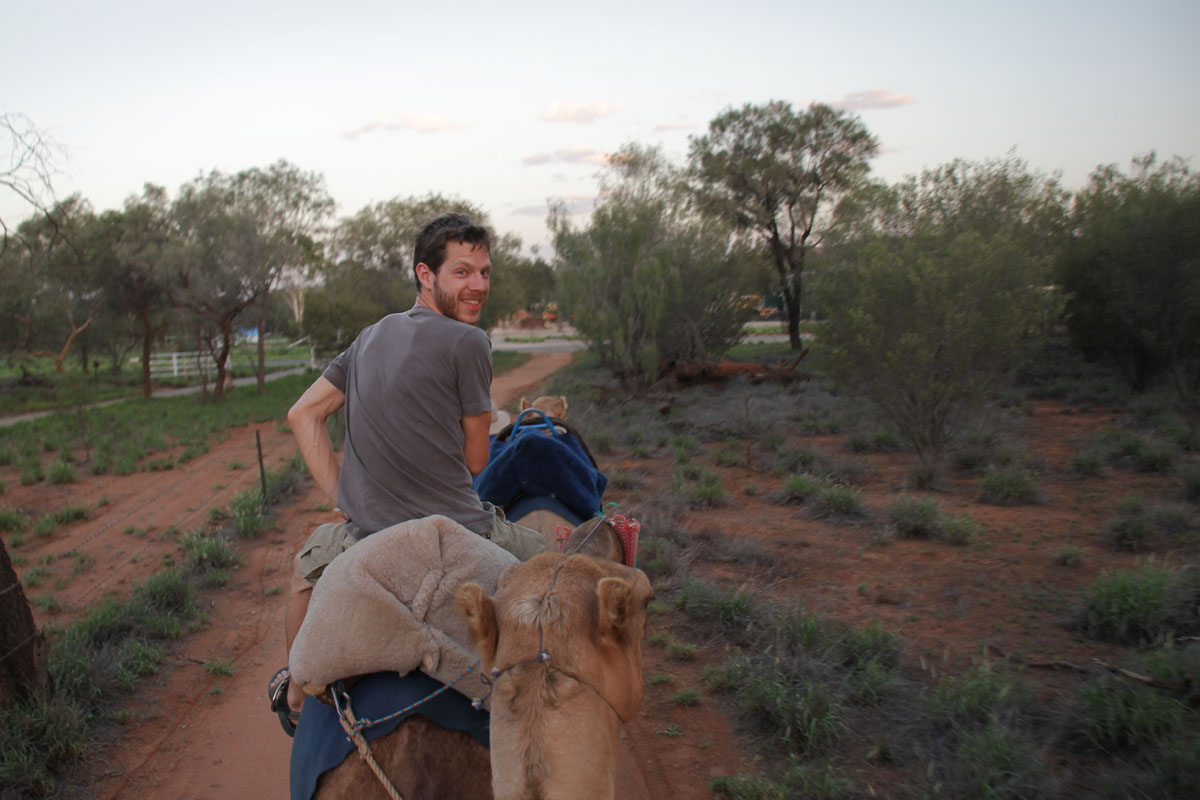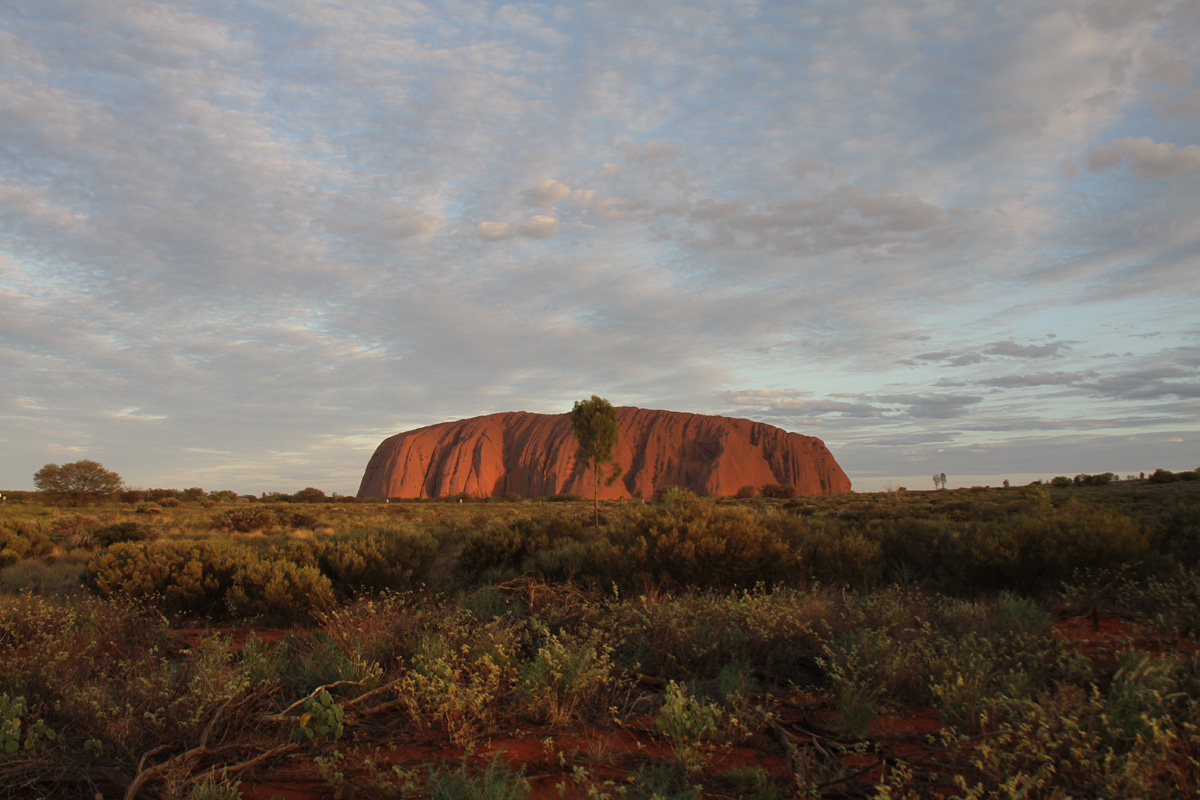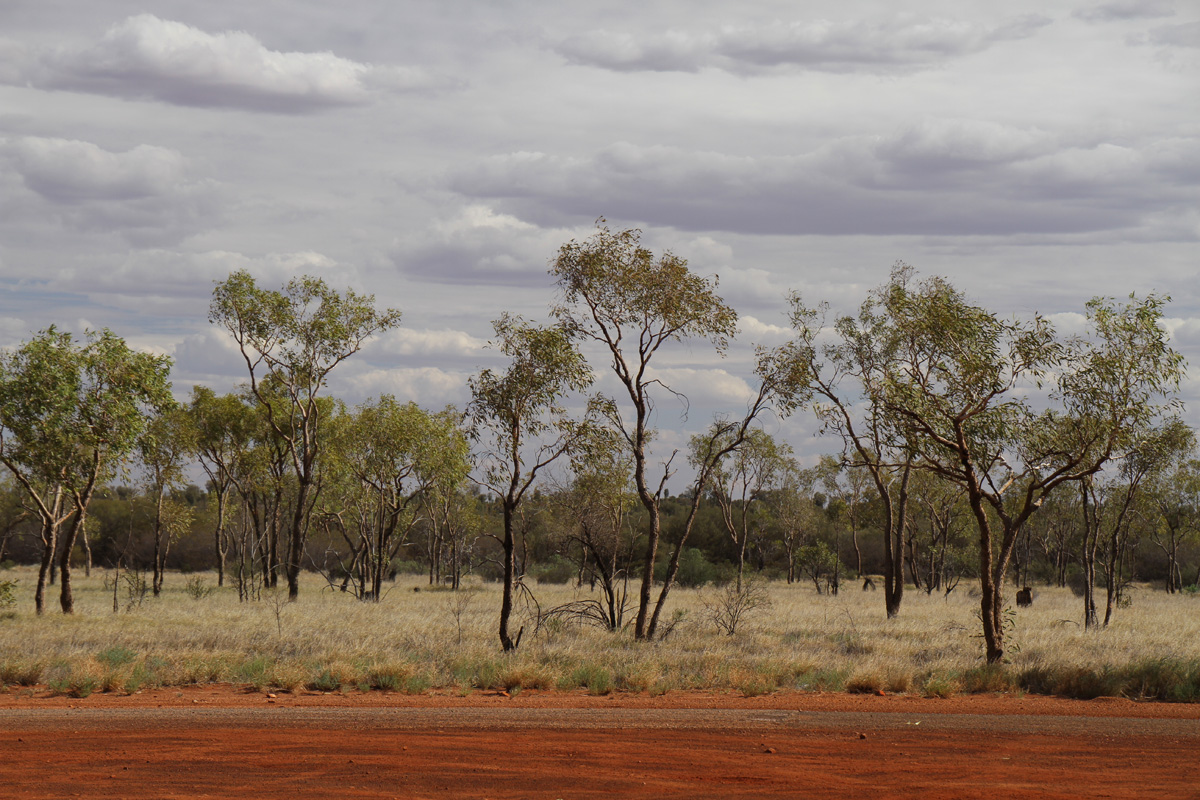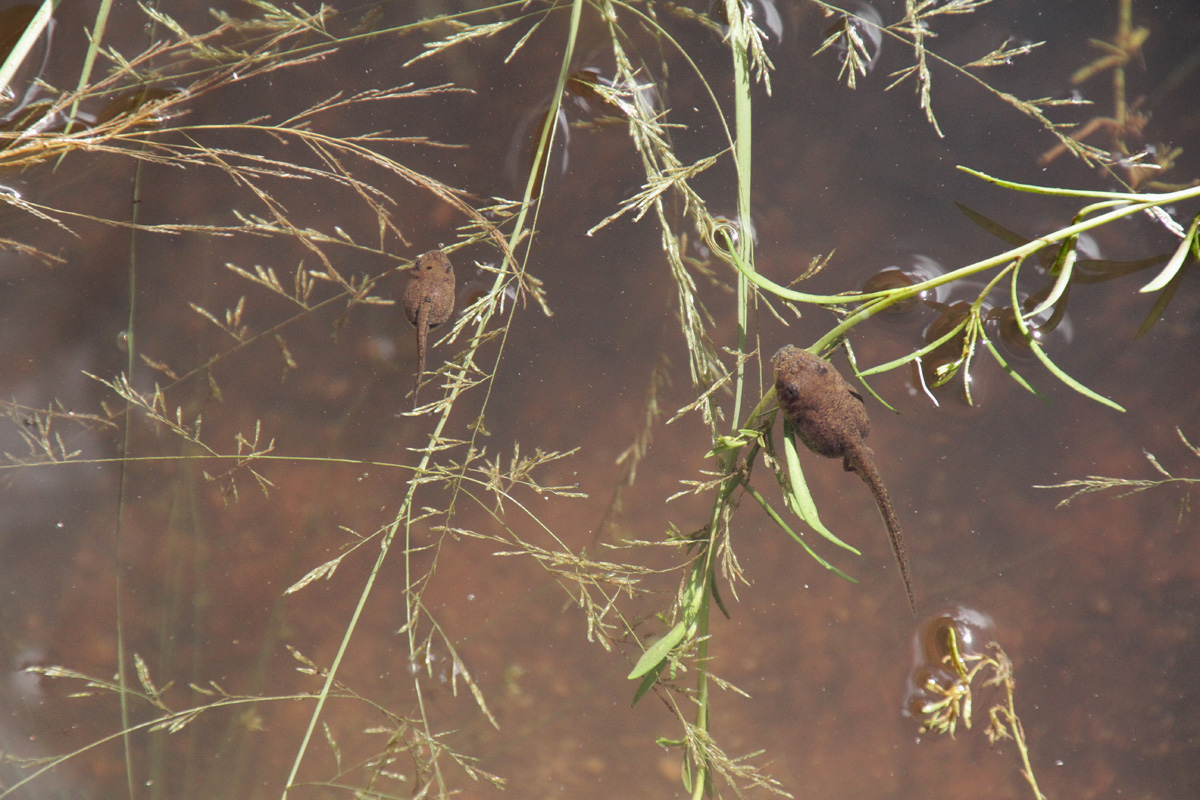Dipping into the West Macs
All around me, rocky orange cliffs towered toward the cyan-blue sky. Below me, fish were swimming in a higher-than-usual river. I couldn’t believe this was the middle of Australia. With a nickname like the Red Centre, I’d never imagined finding this much green in the desert. But here I was, in the heat of February’s summer sun, soaking in a lush paradise.
It was our last of four days in Alice Springs, and it was to be a busy one. The DoubleTree by Hilton had booked me a day trip into the West MacDonnell Ranges, followed immediately by a sunset camel ride with Pyndan Camel Tracks, which the rain had canceled days before. Waiting in the lobby at 7am with a friendly smile was Ben, our guide from Alice Wanderer (we’d later find out that this day was his first-ever solo guide). After our previous day’s time-regimented tour of Uluru, his casual style was welcome. At his emphatic urging, we ran back to the room to grab bathing suits and towels, not quite sure why we’d need them in the desert.
Three days earlier, while looking down from the plane at the “West Macs,” the ancient mountains that extend out from the city’s east and west sides, they looked like brown carpet wrinkles. Our initial impressions: not great. But on the ground and up close, they easily take on a majestic tone. And lucky for us, in the few short days since we had landed, the oft-dry Alice had received a whopping 40mm of rainfall.
Ben pulled the bus into a forested parking lot and the eight of us piled out and began hiking through green-ferned canyons and spring-fed creeks, craning our necks to look for rock wallabies. Fifteen minutes in, we stood inside Standley Chasm, a skyscraper-tall quartzite gap with a small creek at one end. The sunlight illuminated the walls like glowing terra cotta. I spotted a few frogs perched on tiny ledges above the water, reminders of this land’s ancient rainforest.
After a short bus ride, we arrived at Ellery Creek Big Hole, and finally changed into our “swimmers” before walking off down a path. The enormous outdoor pool was a genuine oasis, framed with cliffs on either side. “This isn’t even my favorite spot," Ben confessed plainly. We swam and waded lazily in the high water, wondering how it could get any better than this.
To get to nearby Glen Helen Gorge, we’d have to cross the Finke River. Normally, the slow trickle of the world's oldest river wouldn't pose any problems, but that day's calf-deep waters and wobbly rocks sought to test our determination. Once across, we laid out our towels and jumped in while black swans eyed us from a safe distance.
The local Arrernte people call these rippling ranges Yipirinya, for their resemblance to caterpillars caravanning in long, wavy lines. It’s easy to see why all of these cliffs, gorges, gaps and chasms have been so inviting for thousands of years. The ochre pits were plentiful sources for pigment. Many natural rocky alcoves became sacred gathering places. And the waterholes continue to be perfect for playtime.
By the time we arrived at Ormiston Gorge, our final swimming hole of the day (and our guide’s favorite), our excitement had still not faded. Pointing with his outstretched finger, Ben told us that down the river and around the bend was a magnificent view of the whole canyon. Being the only “adventurous types” in the group, we accepted the challenge and swam through the deep water. We had the entire sundrenched view to ourselves. We turned back reluctantly, and (per usual) we were the last ones back on the bus.
In the end, we made it to our camel ride just in time. Though camels aren’t native to Australia, they’re perfectly suited to the dry environment and have become a bit of a nuisance. In the 1920s, workers released thousands of them after the completion of the railroad, and today there are an estimated one million roaming Central Australia. After mounting the enormous animal and marching west against the darkening sky, the low mountains fading into dusk, I listened to the breeze rattling in the dry bushes. The greens and reds and blues slowly blended into night, and I soaked in the cool desert air.
Don't miss our video of Alice Springs to see the West Macs in action!
Disclosure: My DTour of a Lifetime around Australia is sponsored by DoubleTree by Hilton.




















